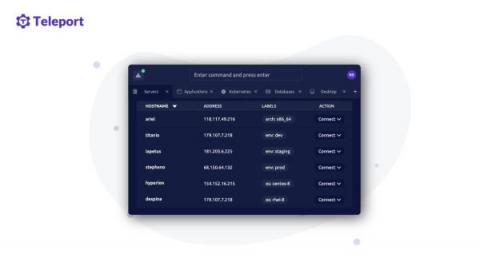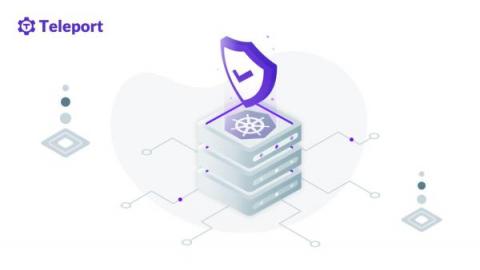Security | Threat Detection | Cyberattacks | DevSecOps | Compliance
Teleport
KubeCon EU 2022. Why you need Teleport in your Kubernetes Infrastructure
Every Kubernetes developer’s favorite time of year is just around the corner, Kubecon EU 2022! Whether you’re attending in person in beautiful Valencia, Spain, or watching the conference from your couch at home, here are a few reasons why — if you operate any Kubernetes infrastructure — you need Teleport.
What is a BISO? How a BISO can help accelerate Fintech innovation.
Getting started with Teleport 9
0:00 Introduction
1:10 Install Teleport on Root Cluster
5:33 DNS
6:36 Configure Teleport
10:17 Create Teleport User
14:09 Have Fun with Teleport
On terminals and sessions
In this post I will be announcing a new open source project: Teleport Connect. It is a dedicated secure web browser for accessing cloud infrastructure. But first, let me explain why we've decided to build it, starting with a bit of historical context. As a kid I have always enjoyed imagining the process of programming to having a conversation with a machine. The REPL loop is the most obvious example of this interaction. As our code grows it no longer fits in a REPL environment.
Lessons From Billions of Breached Records by Troy Hunt of https://haveibeenpwned.com
Innovation lessons we can learn from hackers
6 Best Practices for Kubernetes Audit Logging
Running a Kubernetes-based infrastructure is challenging and complex. Administrators often lament how complicated performance optimization and monitoring are, which can lead to problems in production. Additionally, even finely-tuned Kubernetes deployments can encounter sporadic issues. When Kubernetes starts behaving in strange ways, digging into logs can help you uncover breadcrumbs. These contextual hints can help lead you to possible solutions.
Rethinking Privileged Access Management for Cloud and Cloud-Native Environments
SSH was designed in 1995, LDAP was initially developed in 1993, and role-based access control was introduced in 1992. The concept of least privilege was introduced in 1975. With all of these existing technologies, when are modern privileged access management solutions necessary? This is a common question asked when we pitch the idea of modern privileged access management (PAM).
How to Generate and Configure SSH Certificate-Based Authentication
The SSH protocol offers multiple authentication options: passwords, public keys and certificates. Certificate-based authentication is the most secure of them all, but historically, it has been the most complicated to set up. This tutorial guides you through simple steps to configure certificate-based authentication for an OpenSSH server. First, let's consider the differences between certificates and keys. As you can see, an SSH key is a binary proposition.











